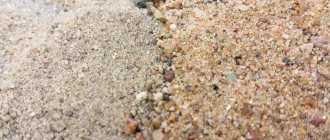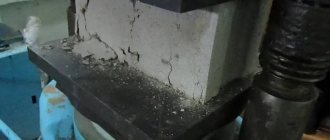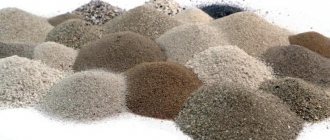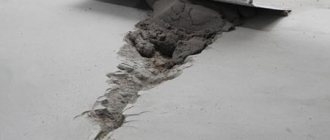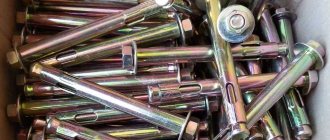Pouring horizontal surfaces with concrete mixtures is a labor-intensive process, the result of which is assessed by the strength and smoothness of the top layer.
The initial leveling of the solution is done as a rule, after which ridges remain. A smoothing iron helps to obtain a smooth surface. This device is included in the tool kit of professional builders.
For one-time work, it is not advisable to purchase an industrial-made smoother, since the tool can be made independently from scrap materials.
Using the smoother
This is a special tool that is used to finally level the concrete surface.
When pouring the concrete base, the initial smoothing of the mixture is carried out as a rule, guided by the installed beacons. This tool evenly distributes the mixture over the concrete surface, leveling slopes, filling holes and clearing off formed bumps.
But even high-quality laying of concrete leads to the formation of unevenness in it, after 1-2 hours. This phenomenon is associated with the release of “concrete milk” from the solution, so you need to do a finer smoothing, removing excess water. At this stage, the master works with a smoother, which performs the following functions:
- Eliminates excess moisture;
- Removes minor irregularities;
- Compacts the concrete mixture.
Preparing the solution and pouring
You can make the filling mixture yourself or purchase a ready-made solution. The latter will be quite expensive, so it’s easier to do everything yourself. To do this you will need:
- concrete mixer (preferably electric);
- several shovels;
- crushed stone;
- sand (without clay impurities);
- cement mixture (not less than 400).
For concreting, connect:
- one part cement;
- two parts sand;
- four parts of crushed stone;
- half part water.
All ingredients must be thoroughly mixed until a single mass is obtained. After this, you need to pour the resulting solution into the space between the beacons, level it with shovels and tamp it.
Important! To avoid being “locked in,” concreting should always begin on the opposite side of the exit.
When part of the surface is already covered with the mixture, it is necessary to remove its remnants using a rule or a trowel until the entire area is “reduced to zero.”
If you use the rule, then the guide beacons must be installed at a distance that will be 30-40 less than the tool itself. By placing it on the guides, you can easily level the surface.
When working with a trowel, it is better to use two “mops” at once, which must be moved alternately in several directions, making sure that the tool does not “sink” into the concrete mixture.
For more information on how to use the ironer correctly, watch the video:
After this, the solution is left for 3-4 days, moistening it with water daily so that cracks do not form on the surface.
At the next stage, you need to cover the filled floor with film and wait another month. During this time, check the surface and wet it with liquid.
After this time, a layer of screed is applied to the concrete pour according to the following algorithm:
- Apply sand-cement mortar or self-leveling mixture to the dry surface in a very thin layer.
- Leave it for several days, moistening it with water.
After the screed has completely dried, concreting the floor is considered complete; all that remains is to get rid of minor errors. To do this, grouting is done. After this, you can safely carry out finishing work and installation of flooring material.
Types of tools for smoothing concrete
Manufacturers of construction tools produce several types of devices that smooth concrete.
Tools differ in type, function and have different properties:
- Channel – corrects freshly laid concrete. Made from stainless steel and aluminum alloys. It is a smooth plate with a mirror surface 1-3 meters wide, up to 6 meters long and a handle.
- Scraper - use a tool to remove lumps and cement laitance and fill the resulting depressions in the already set concrete with the mixture. The width of the scraper smoother plate is from 1 to 6 meters. The design allows you to smoothly change the angle of the plate by twisting the handle.
- Manual rack - a device used in small areas. The short handle of such a smoother is attached directly to the working plane. This type is used on stairs and vertical surfaces.
- Trowels are expensive mechanized tools with an electric and gasoline drive with two working plates. Grinding is carried out by moving the plates in a circle. Used in professional construction.
Mechanical grinding
A high-quality polished concrete floor has an excellent appearance and high wear and moisture resistance.
The concrete coating can be given the required degree of water resistance and strength by grinding. Concrete is polished in two ways:
- Dry. It is started after the floor has completely dried. The method is quite dusty, the amount of dust can be reduced by using a vacuum cleaner.
- Wet. The method is more expensive and is usually used for processing mosaic floors made of natural stone.
Both methods require the use of a grinding machine and trained personnel. First, polish with disks with large abrasive fractions, then move on to smaller ones.
This is interesting: How long does concrete dry indoors and outdoors?
Ironing device
The task of the trowel is to slide freely over the concrete without plunging into its thickness. The working plane (blade) is smooth, with rounded edges. The handle is fixed so as to change the angle of the plate when moving.
When the master moves the plate away from himself, the far edge rises, and when moving in the opposite direction, the rear edge rises. The angle of inclination is changed by installing a gearbox at the point where the handle is attached to the smoothing plate.
A self-made trowel is similar in design to a wide mop for washing the floor. The device consists of a plate and a long handle attached to it. To make a smoothing iron you will need the following:
- Board or timber 20-30 cm wide and up to 2 m long;
- Beam 50x50;
- Bars for making spacers 25x25 and 1-1.5 m long;
- Plane;
- Wood saw or electric jigsaw;
- Sandpaper;
- Self-tapping screws;
- Screwdriver;
- Impregnation, drying oil or paint.
Smalted porcelain tiles
Porcelain tiles with imitation concrete give the interior rigor and restraint and are successfully combined with other finishing materials.
Smalted porcelain tiles will help to radically solve the problem of dust on a concrete floor and at the same time preserve its original appearance. This finishing material can be used for external and internal decoration of any premises.
When using all of the above methods of concrete impregnation, it should be remembered that they significantly reduce, but do not completely eliminate the appearance of dust on the surface. To remove dust from a concrete floor, special impregnations based on organic (acrylic, polyurethane, epoxy) or inorganic (topping soil) compounds are used.
Making a working surface
You can use a smooth edged board 1-2 meters long, depending on the size of the room being concreted. The thickness of the board should be up to 30 mm, otherwise the tool will turn out to be heavy and the handle will sag.
The board is carefully sanded with sandpaper. The ribs are “filled” with 10x10 mm chamfers and rounded with sandpaper. You can check the smoothness of the surface experimentally. The tool is passed over an even layer of sand or other bulk material, and if grooves remain on it, additional grinding is necessary.
When in contact with cement mortar, wood quickly absorbs water and becomes porous. To keep the plate smooth for a long time, it is treated with drying oil or other protective agent. The smoothing plate can be painted.
The surface of the trowel can be made of a duralumin plate. Such a tool turns out to be as light as possible, and it is more convenient to work with it.
Modification of concrete screed using liquid glass
An aqueous alkaline solution of sodium or potassium silicates can improve the resistance of the coating to moisture, elevated temperatures, mold and other external influences.
Liquid glass additives are used in two ways - by introducing them into a solution or by treating an already finished surface.
To prepare an anti-dust impregnation and improve waterproofing, 1 kg M400 Portland cement is mixed with water and mixed with 1 kg of liquid glass.
One of the most inexpensive and effective supplements
Silicates are not used in their pure form, as they are quickly washed out with water.
Dilute silicates with clean tap water with a minimum content of impurities and salts. One glass of silicate glue is poured into 10 liters of water and stirred until a homogeneous solution is obtained. Next, add the dry ingredients in parts with continuous stirring.
The resulting solution is consumed immediately, after which the instruments and containers are cleaned.
How to make a pen
The handle of the smoother is made of timber. It is not advisable to make a handle longer than 6 meters, since the structure will be too heavy and it will be very difficult to work with it.
To work in small areas, use a ready-made shovel handle or a wooden mop. If regular timber is used, the edges are rounded with a plane and sanded with sandpaper.
The prepared handle is attached to the smoothing plate at an angle of 60 degrees with two spacers. The screws are screwed in so that their ends do not protrude onto the surface of the plate and do not disturb its smoothness.
It is advisable to attach 2 handles to a working plate of more than 1.5 meters: the structure will be much more convenient to operate, but you will have to involve an assistant in the process of smoothing the screed.
A good mounting option is a hinged unit: in this case, the maneuverability of the device increases. The handle is attached to the hinge at an angle so that it does not dangle, but only freely changes the angle of inclination of the working surface.
Basalt fiber
Basalt fiber (from roving) is intended for volumetric reinforcement of concrete, mortars and composite materials.
More details
It is also necessary to calculate in advance how many materials will be needed to complete the work.
On average, to pour 18 m2 of screed with a thickness of 5.5 cm, you need 1 cube of concrete.
You can also multiply the length, width and thickness of the screed in meters to get the required number of cubes of concrete. In case of a complex screed configuration or differences in thickness, the values are averaged or the screed is divided into segments, the volumes of which are calculated separately and added up. Additionally, it makes sense to provide up to 15% of concrete for losses.
How to use the ironing iron
Leveling the concrete screed with a trowel is the final stage of pouring work.
First, the mixture is leveled using the rule from the far corner of the room. Then they begin to smooth the surface, adhering to the following recommendations of master builders:
- The trowel is moved slowly and smoothly over the concrete without immersing it in its thickness.
- First, the tool is moved away from you, then back. They pass over the entire area of the concreted surface.
- The next stage is perpendicular to the original direction of movement. Moving the tool away from you and back, sequentially process the entire area. The movements are performed with slight vibration so that the mixture is leveled faster.
- Upon completion of two passes, the smoothness of the concrete screed is visually assessed. If bulges and dents are observed, the smoothing process is repeated in these areas.
At the end of the work, the trowel is cleaned, washed and dried. If reuse is planned after some time, the plane is sanded again with sandpaper and a control test is carried out on bulk materials. It will not be possible to store a homemade wooden tool for a long time in order to use it again, since the wood will dry out and lose the desired smoothness.
A homemade ironing iron is suitable for household use. You can work without assistants and the result is in no way inferior to leveling screeds using mechanized methods.
Preparing for pouring
Before making the concrete mix, make sure that the old floor covering and fill are removed. As a rule, the old screed is removed “clean”, but if it does not have pronounced defects in the form of cracks and chips, then you do not have to remove it, but only prepare it for a new coating.
To prepare a concrete screed for a floor in a country house:
- Set a mark 1 m from the bottom of the doorway and duplicate it on all the walls of the room using a level. Pull the cord over all the marks so as not to lose them and to see how evenly the filling will be done.
- Measure 1 m down from these marks to get the so-called zero along which the screed will be made.
- If the old floor is laid directly on the ground, remove at least 25 centimeters.
- Level the surface and tamp (using wood and a board nailed to it or a specialized vibrating plate).
- Pour gravel (a fraction of about 45-50 mm) to a height of about 5 cm and spill it.
- Re-compact.
- Pour in 10 cm of sand, water it and compact it.
- Fill in another layer of crushed stone (this time 10 cm) and repeat the compaction.
- Add sand in those places where the surface is uneven.
Healthy! The thickness of the screed should not be less than 7 cm, otherwise spreading and peeling will occur.
After this you need to do:
- waterproofing of concrete pavement (film at least 200 microns thick);
- thermal insulation (from polystyrene foam, mineral wool, chipboard, moisture-resistant plywood, cork and much more);
- reinforcement;
- prepare formwork that will simplify the pouring process.
What rules should you follow to get a smooth concrete surface?
For many people, getting a smooth concrete slab is very important. The untreated coating has a huge number of shortcomings, which makes it difficult to use. During use, the surface of the concrete begins to become dusty, which is explained by the extraction of small particles of sand and cement. Such a surface has high porosity. Therefore, any spilled liquid is instantly absorbed.
This is why untreated concrete flooring is not used in residential areas as a finishing surface. Most often it is used in the form of a screed. In the future, it serves as the basis for laying the finishing decorative coating. But this technology is not suitable for installing heated floors. In this case, the finishing decorative layer will only hinder the spread of heat.
Smooth concrete floor
How to make a concrete surface ideally smooth?
Making concrete smooth is quite simple if you follow these rules:
How to level a concrete floor with your own hands
- to obtain a smooth surface, beacons, a rule and a trowel are used;
- beacons play the role of guiding elements. Concrete solution is distributed between them;
- The rule is a long narrow ruler. With its help, the solution is distributed between the beacons;
- a smoothing iron is a tool with a perfectly smooth surface. It smooths out all the bulges on the fresh concrete surface;
- To obtain an even more even surface, special ironing units are used;
- After the initial processing of concrete, it is left for a day to set. If irregularities are identified, they are removed with a wide spatula;
- a few hours after pouring, the coating is treated with bulk cement using trowels;
- at more critical facilities, the concrete surface is treated with liquid glass;
- using fluorosilicate, the concrete coating can become mirror-like;
- To give concrete increased smoothness, it is processed using grinding machines with diamond-coated discs.



